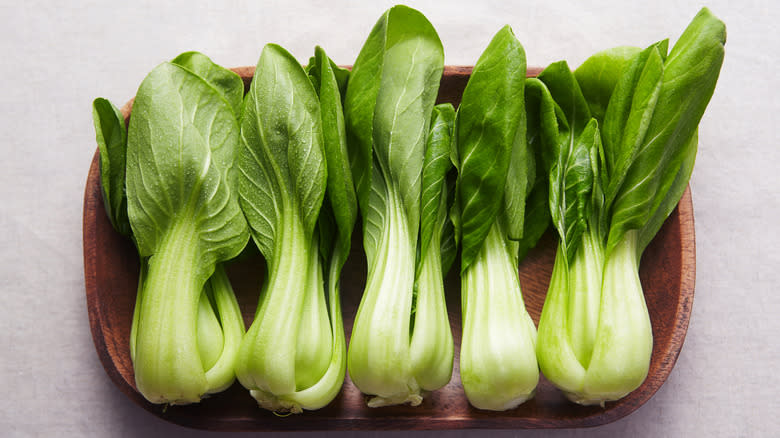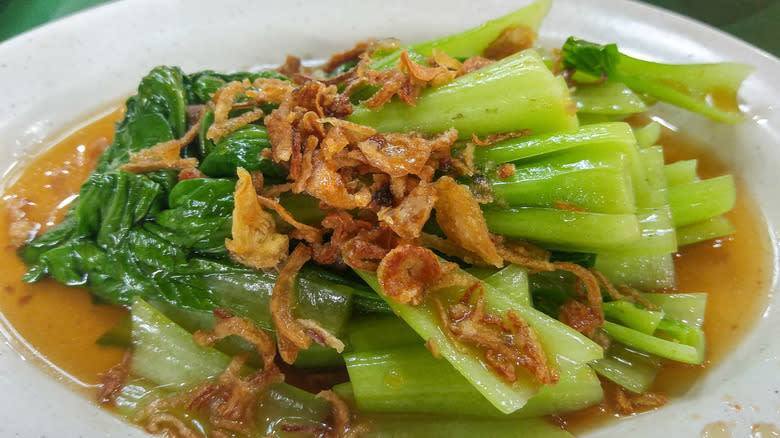Remove The Bitter Taste Of Bok Choy By Blanching It First

Bok choy is a type of Chinese cabbage widely used in East Asian cooking. It's light and crisp with a slight crunch and a mild, peppery flavor. If you're new to using cabbage in your stir-fry, side dishes, or soups, bok choy is a great addition, but in order to cut some of the bitterness, it's best blanched first.
Bok choy belongs to the Brassica genus of vegetables. These are cruciferous veggies that are loaded with antioxidants and vitamins and contain chemical compounds called glucosinolates. These compounds, while healthy, are responsible for some of the bitter taste in these vegetables. Bok choy in its raw state has the crunch of celery, and its texture is lighter than red or white cabbage. It's fine to use without cooking it first if you can handle the bitterness, and just like celery or raw cabbage, it definitely elevates all types of salads. You can use it to make crunchy bok choy salad or enhance your favorite cole slaw recipe. However, we think it sometimes pays to cook bok choy instead of using it raw in a salad.
While the green leaves of the bok choy are pretty mild in flavor, the stems are what hold the bitterness. To prepare this vegetable for recipes like stir-fried bok choy or roasted bok choy with crispy tempeh, you'll want to ensure any bitter bits are tempered. Fortunately, a simple blanching can render bok choy bitterless, and even bring out the natural sweet notes of the vegetable.
Read more: Vinegar Cooking Hacks You'll Wish You Knew Sooner
How To Blanch And Use Bok Choy

To blanch bok choy you'll need a pot of water, a pre-prepared ice bath, and a tablespoon of salt. It may seem counterintuitive to add salt to the bok choy when the end game is to remove the bitterness, but the salt helps enhance the flavor of the bok choy while retaining the original color. Depending on how you plan to use the bok choy, salt is optional.
Bring the pot of water to a boil, and wash and chop the bok choy. Place it in the pot, but don't add too much at one time — you want the water to keep a steady boil. Allow it to boil for 30 seconds, remove it with a slotted spoon, and place it into the ice bath. Unlike other cruciferous veggies, bok choy has a high water content and light color, so no need to overcook it. Allow the bok choy to cool in the ice bath, remove it, and place it on a paper towel.
Once blanched, bok choy can be used in a variety of recipes, and you might find that it's one of the more versatile vegetables in your recipe arsenal. Because this Chinese cabbage is naturally mild with a porous texture, it combines perfectly with bolder flavors, like this recipe for tofu and bok choy stir-fry with peanut sauce. The bonus to blanching your bok choy is that it will freeze beautifully while preserving the flavor and texture.
Read the original article on Tasting Table.

